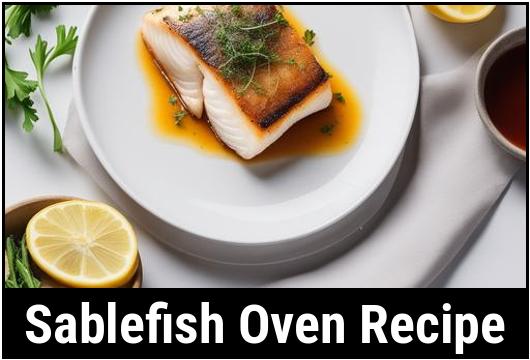
Sablefish Oven Recipe: A Comprehensive Guide To Cooking This Delicious Fish
Sablefish, also known as black cod, is a delectable and delicate fish prized for its rich, buttery flavor and melt-in-your-mouth texture. Cooking sablefish in the oven is a wonderful way to preserve its natural taste and texture while infusing it with complementary flavors. This article will explore the science behind cooking sablefish in an oven, guide you through selecting the best ingredients, provide detailed instructions for preparation, offer optimal oven cooking temperatures and timings, and present a delicious sablefish oven recipe.
Food Science Of Cooking Sablefish In An Oven
Understanding the science behind cooking sablefish in an oven is crucial for achieving perfect results. Sablefish is high in omega-3 fatty acids, which contribute to its rich flavor and delicate texture. When cooked properly, the proteins in sablefish undergo denaturation and coagulation, resulting in a firm yet tender texture. Additionally, the high fat content of sablefish makes it prone to drying out if overcooked, so precise temperature control is essential to retain its moisture and succulence.
The oven cooking method provides a gentle and even heat distribution, allowing the sablefish to cook evenly without losing its moisture. This slow cooking process enhances the natural flavors of the fish while ensuring that it remains tender and flaky.
Choosing Ingredients
Selecting the right ingredients is fundamental to creating a delicious sablefish oven dish. When choosing sablefish, look for fillets that are firm, glossy, and free from any unpleasant odor. Freshness is key to achieving optimal flavor, so purchase your fish from a reputable seafood market or supplier.
In addition to sablefish fillets, gather high-quality ingredients to enhance the flavor of your dish. Ingredients such as garlic, lemon, herbs (such as thyme, rosemary, or dill), olive oil, and salt and pepper can elevate the taste of the sablefish and add complexity to the dish.
Preparing Ingredients
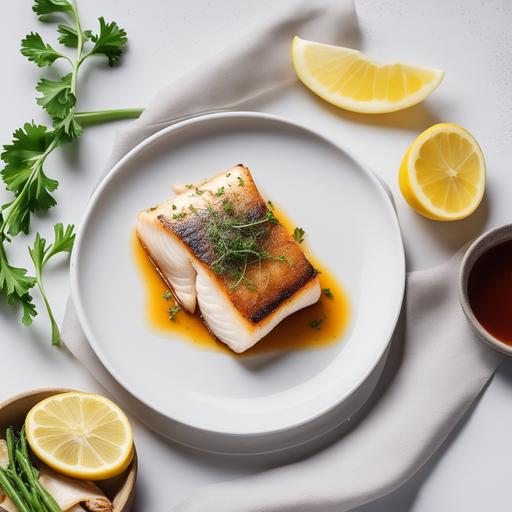
Proper preparation of the ingredients is essential for a successful sablefish oven recipe. Begin by rinsing the sablefish fillets under cold water and patting them dry with paper towels to remove any excess moisture. This step ensures that the fish will cook evenly and prevents it from becoming soggy.
Next, season the sablefish fillets generously with salt and pepper, ensuring that they are evenly coated on both sides. This simple seasoning enhances the natural flavors of the fish and provides a delicious contrast to its buttery richness.
If desired, you can also add additional flavorings such as minced garlic, lemon zest, or fresh herbs to the fillets. These aromatic ingredients infuse the fish with extra flavor and aroma, elevating the dish to new heights.
Optimal Oven Cooking Temperature & Timing
Achieving the perfect oven temperature and cooking time is crucial for cooking sablefish to perfection. Preheat your oven to 375°F (190°C) to ensure that it reaches the optimal temperature for cooking the fish.
Place the seasoned sablefish fillets on a lightly greased baking sheet or in a shallow baking dish, making sure to space them apart evenly to allow for even cooking. Cook the fillets in the preheated oven for 12-15 minutes, or until they are opaque and easily flake with a fork.
Keep in mind that cooking times may vary depending on the thickness of the fillets and the accuracy of your oven. It’s always best to check the fish regularly towards the end of the cooking time to avoid overcooking.
Sablefish Oven Recipe
Ingredients
- 4 sablefish fillets (6 ounces each)
- 2 cloves garlic, minced
- 1 lemon, zest and juice
- 2 tablespoons olive oil
- Salt and pepper to taste
- Fresh herbs (such as thyme or rosemary), for garnish
Instructions
- Preheat your oven to 375°F (190°C) and lightly grease a baking sheet or shallow baking dish.
- Rinse the sablefish fillets under cold water and pat them dry with paper towels.
- Season the fillets generously with salt and pepper on both sides.
- In a small bowl, combine the minced garlic, lemon zest, lemon juice, and olive oil.
- Brush the garlic and lemon mixture over the sablefish fillets, ensuring that they are evenly coated.
- Place the seasoned fillets on the prepared baking sheet or dish, spacing them apart evenly.
- Bake the sablefish in the preheated oven for 12-15 minutes, or until the fillets are opaque and easily flake with a fork.
- Once cooked, remove the sablefish from the oven and garnish with fresh herbs.
- Serve the sablefish hot, accompanied by your favorite side dishes.
Cooking sablefish in the oven is a simple yet elegant way to highlight the natural flavors of this delicious fish. By understanding the science behind the cooking process, selecting high-quality ingredients, and following precise preparation and cooking techniques, you can create a mouthwatering sablefish dish that is sure to impress. Whether served as a weeknight dinner or a special occasion meal, this sablefish oven recipe is sure to become a favorite in your repertoire.
Doneness Checks
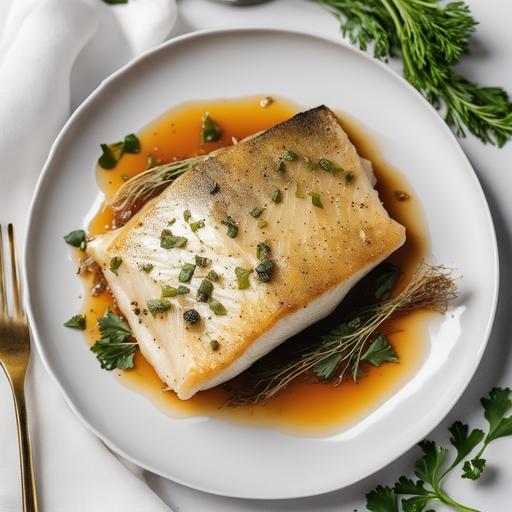
Sablefish, with its velvety texture and mild, sweet flavor, is a favorite among seafood enthusiasts. When cooked in the oven, sablefish retains its moisture and develops a delectable caramelized exterior. The oven’s gentle heat allows the fish to cook evenly, resulting in a succulent dish that’s sure to impress.
Before diving into the recipe, it’s essential to choose high-quality sablefish fillets. Look for fillets that are firm, moist, and free of any fishy odor. Freshness is key when it comes to seafood, so purchase your sablefish from a reputable fishmonger or seafood market.
Ensuring that your sablefish is cooked to perfection requires careful attention to doneness checks. Overcooking can result in dry, tough fish, while undercooking may leave the center raw and unpleasantly chewy. Here are some methods for checking the doneness of your sablefish:
Visual Inspection
One of the simplest ways to determine if your sablefish is done is by visually inspecting it. When properly cooked, the flesh should be opaque and easily flake apart with a fork. The color of the fish will also change from translucent to white or opaque.
Temperature Probe
Using a digital meat thermometer is a foolproof way to ensure your sablefish reaches the desired internal temperature. Insert the thermometer into the thickest part of the fillet, and it should register between 135°F to 140°F (57°C to 60°C) when the fish is cooked through.
Texture Test
The texture of cooked sablefish should be moist and tender, with flakes that easily separate without any resistance. If the flesh feels firm and springs back when touched, it may need more time in the oven.
Undercooking
Undercooking sablefish can result in a raw, unpleasant texture that’s difficult to enjoy. If you find that your fish is undercooked, there are a few steps you can take to salvage the dish:
Return To The Oven
If your sablefish is slightly undercooked, simply return it to the oven for a few more minutes until it reaches the desired doneness. Keep a close eye on it to prevent overcooking.
Finish On The Stovetop
Another option is to finish cooking the sablefish on the stovetop. Heat a skillet over medium heat and place the fish fillets in the pan, cooking for a few minutes on each side until fully cooked.
Overcooking
Overcooking sablefish can result in dry, tough flesh that lacks the delicate texture and flavor for which it’s known. If you’ve accidentally overcooked your fish, don’t worry—there are ways to salvage the dish:
Moisture Restoration
To restore moisture to overcooked sablefish, try drizzling it with a bit of olive oil or melted butter before serving. This will help add richness and moisture to the fish, making it more enjoyable to eat.
Serve With Sauce
Another way to mask the effects of overcooking is by serving the sablefish with a flavorful sauce or dressing. A creamy lemon dill sauce or a tangy mango salsa can help add moisture and flavor to the dish, masking any dryness.
Troubleshooting
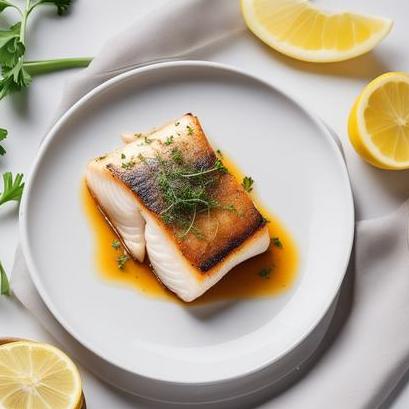
Even with careful preparation, issues may arise when cooking sablefish in the oven. Here are some common problems and how to troubleshoot them:
Fish Sticking To The Pan
If your sablefish sticks to the baking pan, it may be due to insufficient oil or a pan that’s not properly seasoned. To prevent sticking, make sure to generously oil the pan before placing the fish fillets on it. You can also use parchment paper or a silicone baking mat to create a non-stick surface.
Uneven Cooking
Uneven cooking can occur if the sablefish fillets are not of uniform thickness or if they’re overcrowded on the baking pan. To ensure even cooking, try to select fillets that are similar in size and thickness, and leave enough space between them on the pan to allow for proper airflow.
Dry Fish
Dry sablefish is often the result of overcooking or using fillets that are too lean. To prevent dryness, be careful not to overcook the fish and consider basting it with olive oil or butter while it cooks to add moisture and flavor.
Recipe Variations
Now that you’re familiar with the basics of cooking sablefish in the oven, let’s explore some delicious recipe variations to elevate your dish:
Asian-Inspired Glaze
Create a flavorful Asian-inspired glaze by combining soy sauce, honey, ginger, garlic, and sesame oil. Brush the glaze onto the sablefish fillets before baking, and garnish with sliced green onions and toasted sesame seeds for a vibrant finish.
Mediterranean Herb Crust
For a Mediterranean twist, coat the sablefish fillets in a mixture of chopped fresh herbs such as parsley, basil, and oregano, combined with minced garlic, lemon zest, and olive oil. Bake until the herb crust is golden brown and fragrant, and serve with a squeeze of fresh lemon juice.
Citrus-Marinated Sablefish
Marinate the sablefish fillets in a mixture of citrus juices such as orange, lemon, and lime, along with garlic, thyme, and a splash of white wine. Allow the fish to marinate for at least 30 minutes before baking to infuse it with bright, tangy flavors.
Cooking sablefish in the oven is a simple yet elegant way to highlight the delicate flavor and texture of this prized fish. By following the tips and techniques outlined in this guide, you can achieve perfectly cooked sablefish fillets every time. Whether you prefer a classic preparation or want to experiment with different flavors and seasonings, the oven offers endless possibilities for creating delicious sablefish dishes that are sure to impress your family and friends.
Flavour Enhancement Tips
Sablefish, also known as black cod or butterfish, is a delicacy prized for its rich flavor and buttery texture. This deep-sea fish is highly versatile and can be prepared in various ways, but one of the most popular methods is baking it in the oven.
Before diving into the recipe, let’s discuss some flavor enhancement tips to elevate the taste of your sablefish dish:
1. Marinating
Marinating the sablefish before baking can infuse it with additional flavors and help tenderize the flesh. Opt for a marinade that complements the natural richness of the fish, such as a mixture of soy sauce, honey, garlic, and ginger.
2. Seasoning
Don’t be shy with seasoning. A simple combination of salt, pepper, and your favorite herbs and spices can enhance the flavor profile of the sablefish. Consider using ingredients like thyme, rosemary, or smoked paprika for added depth.
3. Citrus Zest
Adding citrus zest, such as lemon or orange, to the marinade or seasoning mix can impart a refreshing brightness to the dish and balance out the richness of the fish.
Texture Enhancement Tips
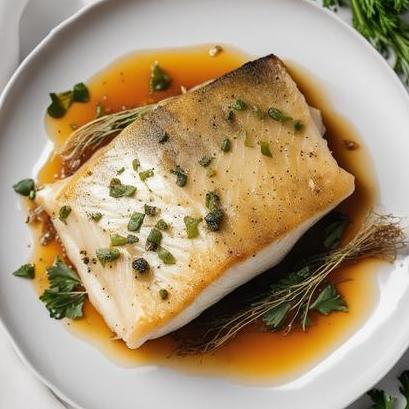
Achieving the perfect texture is crucial when baking sablefish in the oven. Here are some tips to ensure your fish comes out tender and succulent:
1. Proper Thawing
If using frozen sablefish, ensure it is fully thawed before cooking. Thaw the fish overnight in the refrigerator for the best results. This prevents uneven cooking and helps maintain the fish’s natural moisture.
2. Gentle Handling
Handle the sablefish with care to avoid breaking apart the delicate flesh. Use a spatula or fish turner to transfer the fish to and from the baking dish.
3. Basting
Basting the sablefish with melted butter or olive oil during the cooking process can help keep it moist and prevent it from drying out. This also adds an extra layer of flavor and richness to the dish.
Cooking At Different Temperatures
The cooking temperature plays a significant role in the outcome of your sablefish dish. Here’s how to adjust the temperature based on your desired results:
1. Low And Slow
Baking the sablefish at a lower temperature, around 275°F to 300°F (135°C to 150°C), for a longer period can result in a more tender and melt-in-your-mouth texture. This method is ideal for those who prefer a softer, flakier fish.
2. High Heat
For a quicker cooking time and a slightly firmer texture, you can opt for a higher temperature, around 400°F to 425°F (200°C to 220°C). This will help create a golden brown crust on the outside while keeping the inside moist and succulent.
3. Medium Heat
A moderate temperature, around 350°F to 375°F (175°C to 190°C), strikes a balance between tenderness and caramelization. This is a versatile option that works well for most sablefish recipes.
Cooking Tips
Now that we’ve covered the basics, let’s delve into the step-by-step process of baking sablefish in the oven:
-
Preheat the Oven: Start by preheating your oven to the desired temperature based on your preferred cooking method.
-
Prepare the Fish: Pat the sablefish fillets dry with paper towels to remove any excess moisture. This helps ensure a crispy exterior when baking.
-
Season or Marinate: Season the sablefish generously with salt, pepper, and any other desired herbs or spices. Alternatively, you can marinate the fish in your favorite sauce or marinade for added flavor.
-
Arrange in a Baking Dish: Place the seasoned or marinated sablefish fillets in a lightly greased baking dish, making sure they are not overcrowded. Leave some space between each fillet to allow for even cooking.
-
Bake: Transfer the baking dish to the preheated oven and bake the sablefish for the appropriate amount of time, depending on the temperature you’ve chosen. Keep a close eye on the fish to prevent overcooking.
-
Baste (Optional): If desired, baste the sablefish with melted butter or olive oil halfway through the cooking process to keep it moist and flavorful.
-
Check for Doneness: The sablefish is done when it flakes easily with a fork and reaches an internal temperature of 145°F (63°C). Remove it from the oven and let it rest for a few minutes before serving.
Serving Suggestions
Now that your sablefish is perfectly cooked, it’s time to plate up and enjoy! Here are some serving suggestions to complement this delectable dish:
- Garnish: Sprinkle freshly chopped herbs, such as parsley or chives, over the baked sablefish for a pop of color and freshness.
- Side Dishes: Serve the sablefish alongside your favorite side dishes, such as roasted vegetables, steamed rice, or a crisp salad.
- Sauces: Pair the sablefish with a flavorful sauce, such as a citrus beurre blanc, miso glaze, or herb-infused aioli, to enhance its taste even further.
Conclusion
Baking sablefish in the oven is a simple yet elegant way to highlight the natural flavors and textures of this exquisite fish. By following the tips and techniques outlined in this article, you can create a mouthwatering dish that is sure to impress your family and friends. Whether you’re cooking for a special occasion or simply craving a gourmet meal at home, this sablefish oven recipe is bound to delight your taste buds.
FAQS
What Ingredients Do I Need To Make Sablefish In The Oven?
To make sablefish in the oven, you will need the following ingredients:
- 4 sablefish fillets
- 1/4 cup soy sauce
- 1/4 cup honey
- 2 tablespoons sesame oil
- 2 tablespoons rice vinegar
- 1 tablespoon grated ginger
- 2 cloves garlic, minced
- Salt and pepper to taste
How Long Does It Take To Cook Sablefish In The Oven?
The cooking time for sablefish in the oven may vary depending on the thickness of the fillets. As a general rule, preheat your oven to 425°F (220°C) and cook the sablefish for approximately 12-15 minutes per inch of thickness. The fish should easily flake with a fork when cooked through.
Can I Substitute The Sablefish With Another Type Of Fish For This Recipe?
Absolutely! While sablefish has a rich and buttery flavor that works wonderfully in this recipe, you can substitute it with other fatty fish like salmon or black cod. Keep in mind that different fish may require slight adjustments in cooking time due to variations in thickness.
Can I Marinate The Sablefish Before Baking It In The Oven?
Yes, marinating the sablefish before baking can enhance its flavor. In a shallow dish, combine the soy sauce, honey, sesame oil, rice vinegar, grated ginger, minced garlic, salt, and pepper. Place the sablefish fillets in the marinade and let them sit for at least 30 minutes or refrigerate them for up to 2 hours for a more intense flavor.
What Side Dishes Pair Well With Sablefish Cooked In The Oven?
Sablefish pairs well with various side dishes, allowing you to customize your meal according to your preferences. Some popular options include steamed rice, roasted vegetables, sautéed greens, or a fresh salad. Additionally, you can add a squeeze of lemon juice over the cooked fish or garnish it with chopped fresh herbs like cilantro or dill for added freshness.


